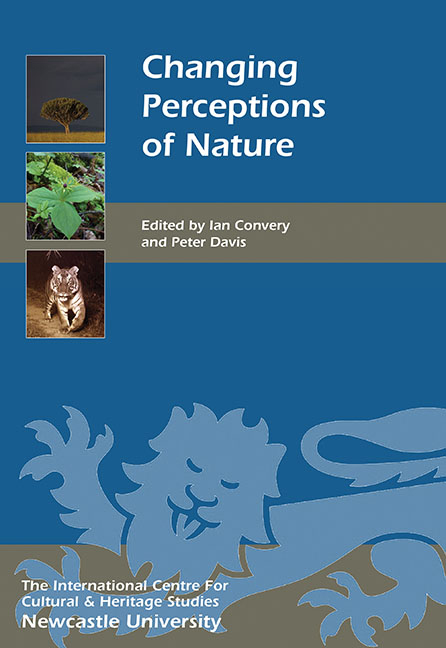Introduction
Published online by Cambridge University Press: 26 October 2017
Summary
Nature, culture and heritage are deeply entwined; their threads run together in some of our finest museums, in accounts of exploration and discovery, in the work of artists, poets and writers, and in areas that are cherished and protected because of their landscapes and wildlife. The conservation ethic – placing a value on nature, on wildlife, on wilderness – lies at the heart of the concept of ‘natural heritage’ but we need to question how those values originated, were consolidated and ultimately moulded and changed over time. In a contemporary context the connections between nature and culture have sometimes become lost, fragmented, dislocated or misunderstood; where and how did the conservation ethic begin and how do we engage with the idea of ‘nature’ today? The primary focus of this book is to re-evaluate the role of culture in developing the concept of nature as heritage, reflecting on the shifting perceptions of the natural world over the last 300 years.
Our earliest concepts of nature are located in medieval bestiaries, whose fantastic animals and plants were challenged by the work of pioneering naturalists such as William Turner and Conrad Gessner, two men who embody the impact of Renaissance ideas. This period led to the formation of early collections of natural history specimens (and antiquities and ethnographic objects) that have been labelled ‘Cabinets of Curiosity’. These early-sixteenth-century museums were attempts to understand a world – and especially its weird and wonderful plants and animals – that was being ‘discovered’ through the expansion of trade routes and geographical exploration. New discoveries demanded the organisation of nature, and the Swedish naturalist Carl von Linne (Linnaeus) made an enormous contribution to our understanding of nature by devising a system of classification and a method of naming species that remain fundamental tools for today's naturalists.
Collecting nature in the Renaissance was a significant pastime only for the rich and powerful, leading to magnificent private collections; many of these, over time, have been integrated into today's museums. Gradually, however, during the Age of Enlightenment, provincial naturalists and collectors, such as Gilbert White, began to make significant contributions to natural history and by the 1840s – with the emergence of the ‘naturalist field club’ – being ‘a naturalist’, spending time studying and collecting nature, became a respectable social phenomenon.
- Type
- Chapter
- Information
- Changing Perceptions of Nature , pp. 1 - 4Publisher: Boydell & BrewerPrint publication year: 2016



